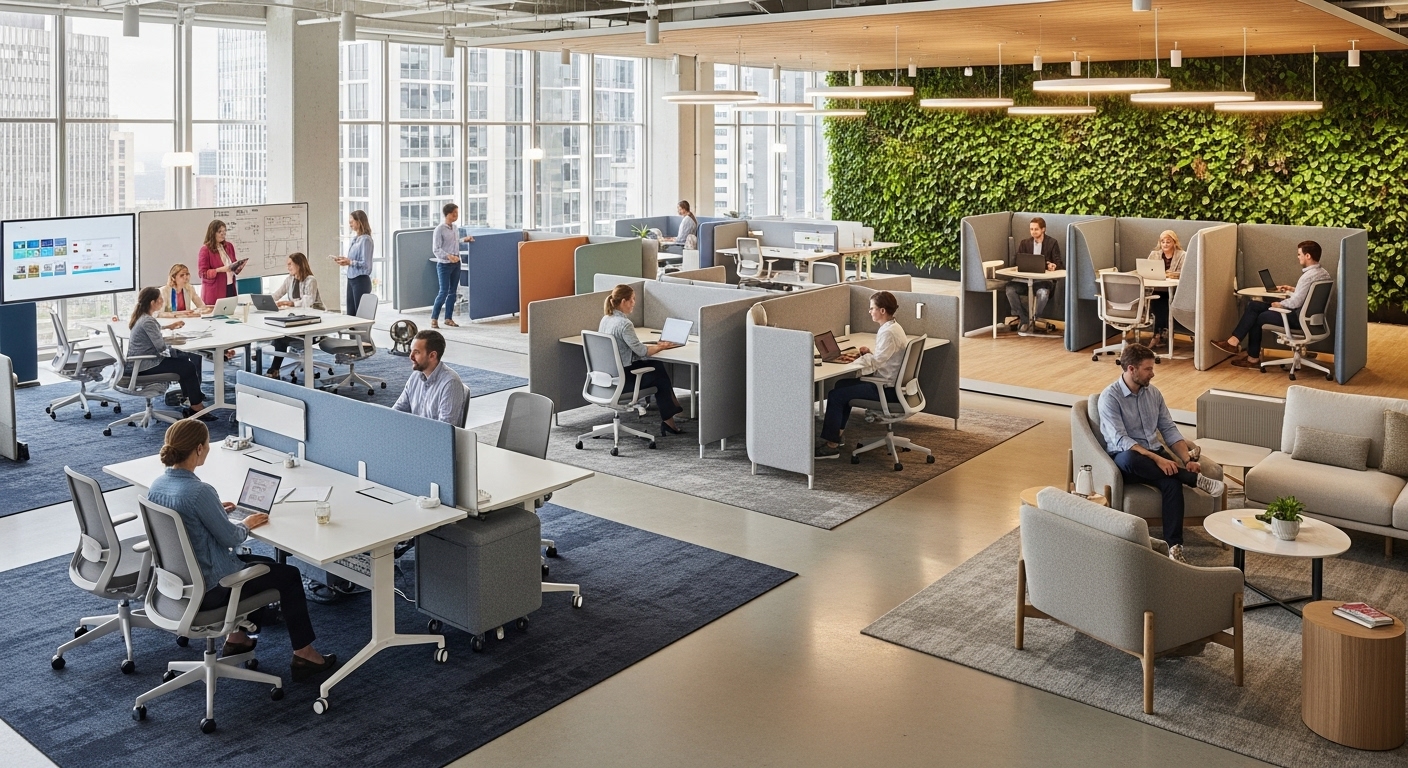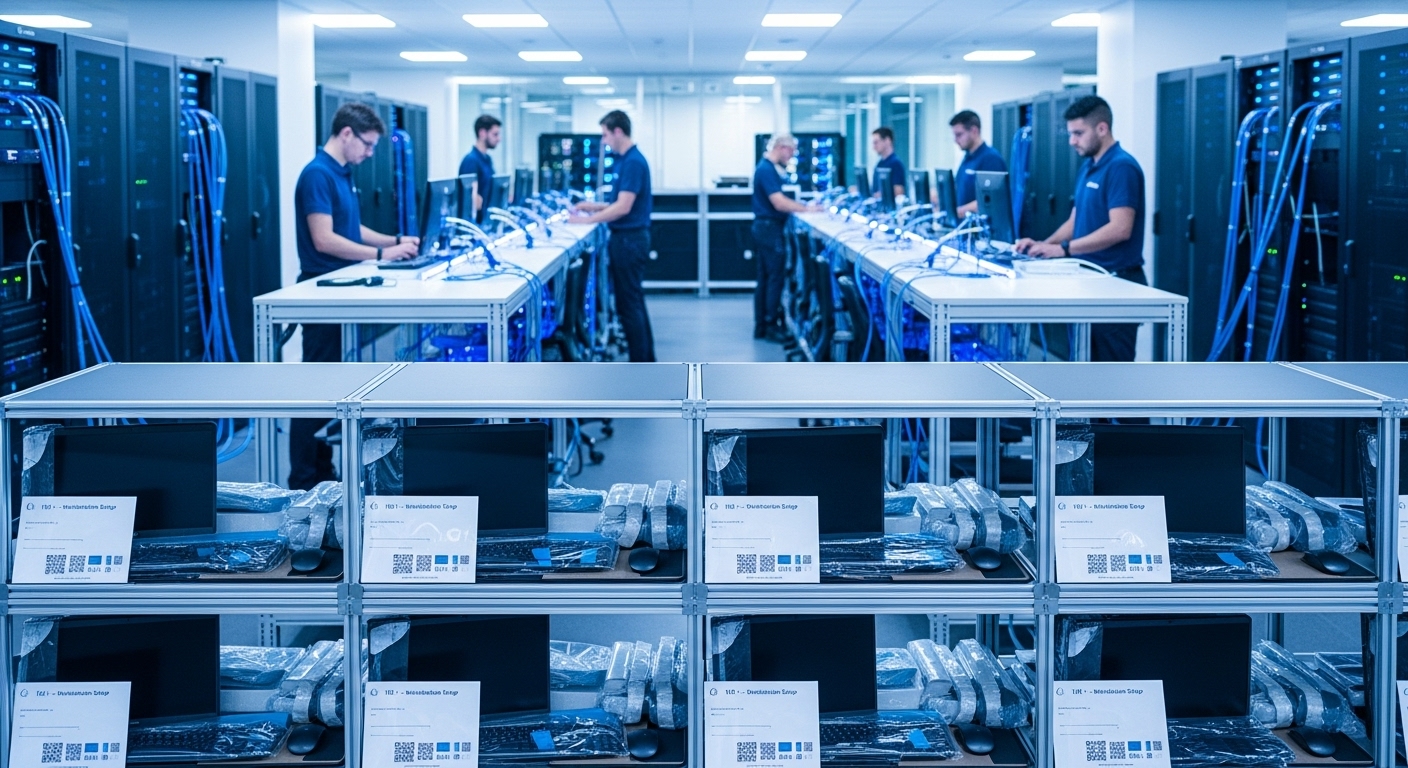In today’s hyper-connected world, the cost of a single data breach can be crippling, reaching millions of dollars in fines, recovery costs, and reputational damage. Yet, for many organizations, cybersecurity remains an afterthought—a layer of software and policy applied only after the physical and digital infrastructure is already in place. This reactive approach is not only less effective but significantly more expensive than building security into the very foundation of your workspace. This is the essence of a security-first approach: treating cybersecurity not as a feature, but as a core architectural principle from the earliest design stages. It’s about shifting from merely installing firewalls to holistically designing a resilient ecosystem. In this guide, we’ll move beyond basic IT setup and explore how to embed security into every phase of your office design and logistics, from the initial blueprint to the ongoing operational lifecycle. We will cover how to integrate threat modeling, fortify physical security, master network segmentation, and establish processes for continuous vigilance, ensuring your workspace is not just smart and efficient, but fundamentally breach-proof.
The Security-First Mindset: Integrating Threat Modeling into Your Initial Design
Before a single server is racked or a network cable is pulled, the most critical security work begins. A security-first mindset starts with proactive threat modeling—a systematic process of identifying potential threats and vulnerabilities from an attacker’s perspective. This isn’t a task for the IT department alone; it’s a collaborative effort involving architects, facilities managers, and business leaders during the initial blueprint phase. Methodologies like STRIDE (Spoofing, Tampering, Repudiation, Information Disclosure, Denial of Service, and Elevation of Privilege) provide a structured framework for this analysis. The process involves defining what you’re trying to protect (critical data, intellectual property, operational systems), who might attack it (insiders, external actors, automated bots), and how they might do it. For instance, when designing an office layout, you might ask: Where will sensitive conversations happen? How can we prevent unauthorized access to network ports in public areas? Could an attacker physically access our server room? By asking these questions early, security controls become integral design features rather than costly, disruptive retrofits. This initial analysis informs everything that follows, from the physical layout of the building to the logical architecture of the network, ensuring that security is a foundational element, not a bolted-on accessory.
Fortifying the Foundation: Physical Security in Workspace Logistics
Digital defenses are useless if an adversary can simply walk in and physically access your hardware. Integrating robust physical security into your workspace design and logistics is a non-negotiable aspect of a breach-proof strategy. This goes far beyond a simple lock on the server room door. It starts with strategic location and construction. Server rooms should be located in the core of the building, away from exterior walls and windows, and built with reinforced materials and fire-suppression systems tailored for electronic equipment. Access control is paramount. Multi-factor authentication, combining a keycard with a biometric scan or a PIN, should be the standard for all sensitive areas. Every access attempt should be logged and monitored. The logistics of your network cabling also play a crucial role. All network drops in common areas or meeting rooms should be disabled by default and activated only upon request. Cabling infrastructure should be run through secure, tamper-evident conduits. Furthermore, the placement of Wi-Fi access points must be carefully planned to shape the wireless signal, preventing it from bleeding excessively outside the company’s physical perimeter where it could be intercepted. Finally, a modern surveillance system, fully integrated with your IT network, provides both a deterrent and a critical source of data for incident response, ensuring you have a complete picture of any physical security event.
Digital Moats and Drawbridges: Mastering Network Segmentation
In a flat network architecture, a single compromised device—like an employee’s laptop or a vulnerable IoT thermostat—can give an attacker free rein to move laterally across your entire digital environment. Network segmentation is the practice of dividing your network into smaller, isolated sub-networks or zones, creating digital moats that contain potential breaches. This foundational security principle drastically limits an attacker’s blast radius. The design process should map out distinct zones based on trust and function. For example, create a completely separate network for guest Wi-Fi, with no access to internal resources. Isolate your corporate network for employees from the network that runs sensitive operational technology (OT) like building management systems. Go even further by segmenting departments; the finance team’s devices shouldn’t be on the same sub-network as the marketing team’s. Modern approaches like micro-segmentation take this a step further, allowing you to create secure perimeters around individual workloads or applications, whether they are on-premise or in the cloud. Implementing this with technologies like Virtual Local Area Networks (VLANs) and sophisticated firewall rules from day one is far more efficient than attempting to re-architect a live, production network. It ensures that even if one area is breached, the rest of your digital fortress remains secure.
The Procurement Gauntlet: Secure Sourcing for Hardware and Software
Your IT infrastructure’s security is only as strong as its weakest link, and that chain of trust begins with your supply chain. A breach-proof design must include a rigorous, security-focused procurement process for all hardware and software. This means moving beyond decisions based purely on cost or features and scrutinizing the security posture of your vendors. For hardware, this involves verifying the provenance of components to guard against counterfeits or pre-compromised devices. You should prioritize manufacturers that offer built-in security features, such as Trusted Platform Modules (TPM) for hardware-level encryption and secure boot capabilities. When sourcing software, whether it’s an operating system or a specialized business application, your organization needs a clear policy. This includes favoring vendors who are transparent about their Secure Software Development Lifecycle (SSDLC) and can provide documentation like a Software Bill of Materials (SBOM), which lists all components used in their code. Before any new software is deployed, it must be scanned for known vulnerabilities. This ‘procurement gauntlet’ ensures that you are not inadvertently planting security risks into your ecosystem from day one. It establishes a baseline of trust and reduces the attack surface before the infrastructure is even powered on.
Beyond the On-Premise Fortress: Architecting for Secure Cloud Integration
The modern office is a hybrid entity, with a physical footprint that extends seamlessly into the cloud. A security-first design must therefore account for the constant flow of data between your on-premise infrastructure and cloud services like AWS, Azure, or Google Cloud. Architecting this connection securely is critical. The first layer is a secure transport mechanism, often achieved through an encrypted Virtual Private Network (VPN) or a more sophisticated SD-WAN (Software-Defined Wide Area Network) solution that offers enhanced security and performance. However, the core of secure cloud integration lies in Identity and Access Management (IAM). Your design must include a centralized identity provider and enforce a strict principle of least privilege, ensuring users and applications have access only to the data and resources absolutely necessary for their function. Mandatory Multi-Factor Authentication (MFA) for all cloud access is non-negotiable. Furthermore, your architecture must address data protection across its entire lifecycle. This means implementing strong encryption for data both in transit (as it moves between your office and the cloud) and at rest (while it’s stored on cloud servers). A well-architected hybrid environment treats the cloud not as a separate entity, but as a secure, integrated extension of your physical workspace.
The Ever-Vigilant Sentinel: Building a Framework for Continuous Monitoring and Response
A secure IT setup is not a ‘set it and forget it’ project. The threat landscape evolves continuously, and so must your defenses. A truly breach-proof architecture is designed from the outset for continuous monitoring and rapid response. This means building in the capacity to see and analyze everything happening on your network. A Security Information and Event Management (SIEM) system should be a core component of your design, acting as a central nervous system that collects, correlates, and analyzes log data from every device, server, and application in your environment. This is complemented by Intrusion Detection and Prevention Systems (IDS/IPS) that actively scan network traffic for malicious patterns. However, collecting data is only half the battle. Your initial setup must also include a well-documented and practiced Incident Response (IR) plan. This plan details the specific steps to be taken in the event of a security incident: who to contact, how to isolate affected systems to prevent further damage, how to eradicate the threat, and how to recover safely. Designing your infrastructure to support this plan—for instance, by enabling remote forensic analysis or network segmentation on the fly—transforms your IT setup from a static fortress into a dynamic, resilient ecosystem capable of defending itself.
Conclusion
Building a breach-proof IT infrastructure is a paradigm shift away from reactive cybersecurity. It requires viewing security not as a feature to be added, but as the fundamental design philosophy guiding every decision, from the initial architectural blueprint to the logistics of daily operation. By embedding security into the core of your workspace, you move from a position of defense to one of resilience. The journey begins with a security-first mindset, using threat modeling to anticipate risks before they materialize. It continues by fortifying the physical foundation, ensuring digital assets are protected by tangible controls. Mastering network segmentation creates digital moats that contain and neutralize threats, while a rigorous procurement process ensures you aren’t building on a compromised foundation. As your operations extend into the cloud, a secure, integrated architecture protects your data wherever it resides. Finally, by designing for continuous monitoring and response, you create an ever-vigilant system that can adapt and react to the evolving threat landscape. Ultimately, a security-first approach is an investment that pays dividends not just in breach prevention, but in operational stability, client trust, and long-term business resilience. It is the definitive way to ensure your workspace is truly built for the future.





